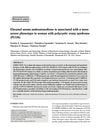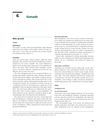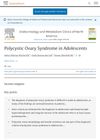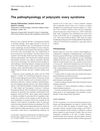17-Hydroxyprogesterone Responses to Gonadotropin-Releasing Hormone Reveal Distinct Phenotypes of Functional Ovarian Hyperandrogenism and Polycystic Ovary Syndrome
September 2007
in “
The Journal of Clinical Endocrinology and Metabolism
”

TLDR The research found that polycystic ovary syndrome (PCOS) has two distinct types, with one having more severe hormone and insulin issues.
In 2007, Pasquali et al. conducted a study on 148 women with polycystic ovary syndrome (PCOS) and 22 healthy controls to investigate the role of functional ovarian hyperandrogenism (FOH) in PCOS. They found that PCOS could be divided into two phenotypes based on the 17-hydroxyprogesterone response to the GnRH agonist buserelin: a normal-response PCOS group (NR-PCOS, n = 78) and a high-response PCOS group (HR-PCOS, n = 70). The HR-PCOS group had more severe hyperandrogenemia, higher basal testosterone, free androgen index, 17-hydroxyprogesterone, estrogens, insulin, and C-peptide levels, and lower insulin sensitivity compared to the NR-PCOS group. The study concluded that FOH is not specific to all women with PCOS and that insulin may play a role in the overactivation of the CYP17 enzyme pathway in women with HR-PCOS, leading to more severe hyperandrogenemia and insulin resistance. This suggests that there are distinct clinical and metabolic phenotypes within PCOS.





